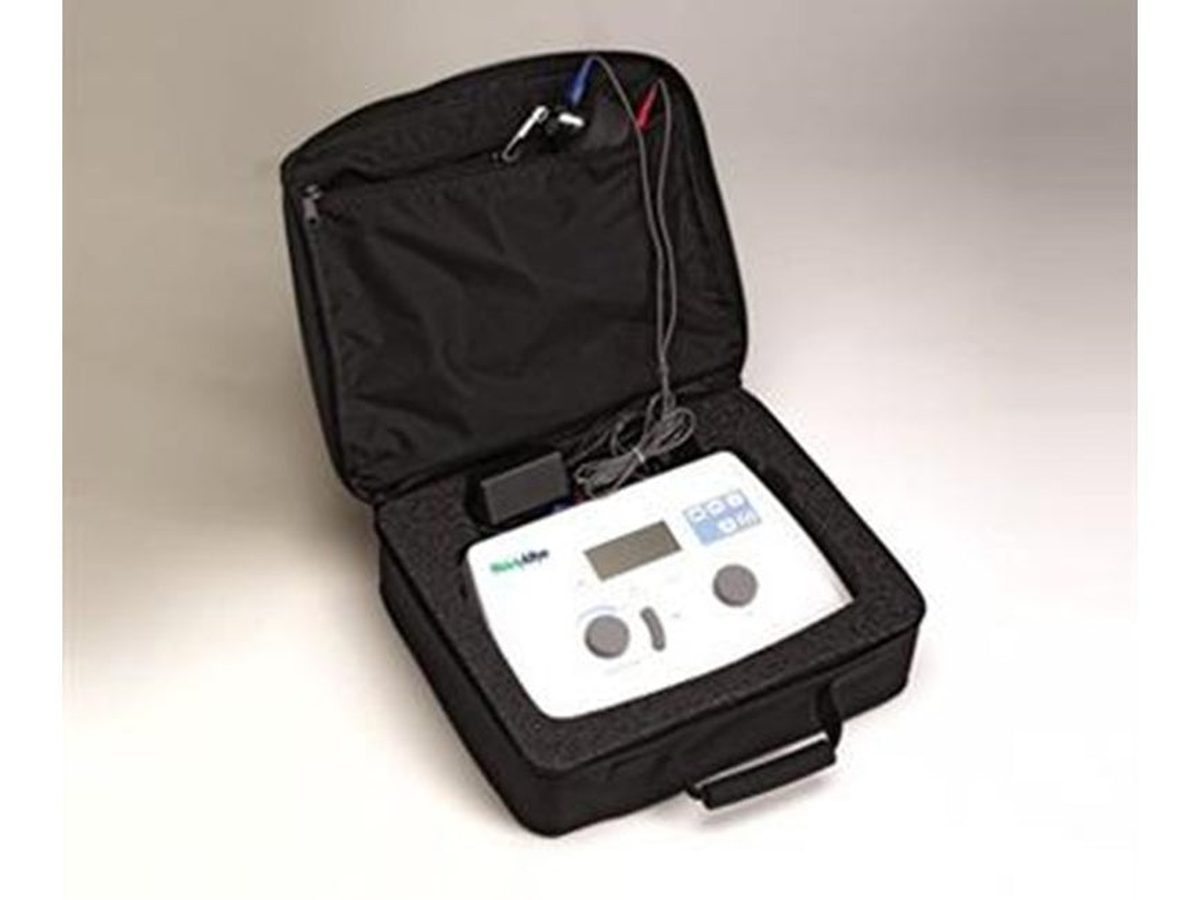Overview of the AM 282 Audiometer
The Welch Allyn AM 282 Manual Audiometer is a portable air conduction audiometer designed for hearing screening in medical offices, occupational health settings, schools, and industrial environments. This comprehensive guide covers clinical operation, technical specifications, calibration requirements, and troubleshooting procedures for biomedical technicians and clinical staff.
Technical Specifications
| Parameter | Specification |
|---|---|
| Test Frequencies | 125, 250, 500, 1000, 1500, 2000, 3000, 4000, 6000, 8000 Hz (11 frequencies) |
| Frequency Accuracy | ±1% for ≤1000 Hz, ±3% for >1000 Hz (per ANSI S3.6) |
| Intensity Range | -10 to 100 dB HL in 5 dB steps |
| Intensity Accuracy | ±3 dB (0-80 dB), ±5 dB (80-100 dB) |
| Headphones | DD45 supra-aural audiometric headphones |
| Power | AC adapter (100-240V, 50-60Hz) or 5 AA batteries (alkaline/NiMH) |
| Battery Life | Minimum 10 hours continuous operation (alkaline) |
| Dimensions | 8.76" L × 3.18" W × 12.59" H |
| Weight | Approximately 2.55 lbs |
| Operating Temp | 50°F to 95°F (10°C to 35°C) |
Clinical Operation
Pre-Test Setup
- Select quiet testing environment (<40 dB ambient noise)
- Verify equipment function (listening check at all frequencies)
- Ensure fresh batteries or AC power connected
- Clean headphone cushions with disinfectant wipe
- Position patient comfortably with headphones properly seated
Standard Screening Protocol
- Begin testing at 1000 Hz (reference frequency)
- Start at 40 dB HL or level expected to be clearly audible
- Present tone for 1-2 seconds using tone interrupter button
- Instruct patient to respond (verbal response or handswitch button press)
- If response confirmed, decrease intensity in 10 dB steps until no response
- Increase intensity in 5 dB steps to establish threshold (lowest level where patient responds 50% of presentations)
- Record threshold on audiogram form
- Test remaining frequencies in order: 2000, 3000, 4000, 6000, 8000 Hz (ascending), then 500, 250, 125 Hz (descending)
- Retest 1000 Hz to verify reliability (should be within ±5 dB of initial threshold)
- Repeat procedure for opposite ear
Calibration Requirements
Annual Calibration Components
Required Equipment:
- Audiometric coupler (IEC 60318-1, 6 cc)
- Type 1 sound level meter with flat frequency response
- Frequency counter (0.01 Hz resolution)
- Audiometer test system or blood pressure simulator
Tests Performed:
- Frequency accuracy verification (11 frequencies)
- Sound pressure level calibration (all frequency/intensity combinations)
- Attenuator linearity
- Harmonic distortion analysis
- Rise/fall time measurement
- Listening checks for acoustic artifacts
Calibration Standards
- ANSI S3.6-2018: Specification for Audiometers
- ISO 389 Series: Reference zero for audiometric calibration
- OSHA 29 CFR 1910.95: Requires annual calibration for occupational hearing conservation
Troubleshooting Guide
Problem: No Sound from Headphones
Check:
- Power on and battery/AC power adequate
- Headphone cable securely connected
- Tone interrupter button pressed during test
- Intensity level >0 dB HL
- Test with alternate headphones to isolate problem
Problem: Inconsistent or Erratic Output
Check:
- Battery voltage (replace if <5.5V under load)
- Headphone cable for breaks or intermittent connection
- Clean headphone jack and cable connections
- Verify proper environmental conditions (temperature, humidity)
Problem: Patient Reports Distorted Sound
Check:
- Frequency accuracy using frequency counter
- Harmonic distortion (should be <3.5% per ANSI S3.6)
- Headphone driver damage—replace if confirmed
- Output intensity not exceeding 100 dB HL maximum
Maintenance Schedule
Daily (Before Each Use)
- Listening check at multiple frequencies and intensities
- Visual inspection for damage
- Clean headphone cushions
- Verify adequate power (battery level or AC connection)
Monthly
- Detailed listening check by trained personnel
- Headphone cushion condition inspection
- Control function verification (all knobs, buttons)
- Documentation review
Quarterly
- Spot-check calibration at 1000 Hz, 40 dB HL
- Frequency accuracy verification using counter
- Headphone cushion replacement if showing wear
- Cable and connection integrity inspection
Annual
- Complete formal calibration by qualified technician
- Replace headphone cushions regardless of appearance
- Internal cleaning (compressed air, wipe interior surfaces)
- Update calibration documentation and asset records
Infection Control
Headphone Cleaning Procedures
- Between Patients: Wipe cushions with alcohol or quaternary ammonium disinfectant wipes
- Contamination: If visibly soiled, replace cushions immediately
- Storage: Store in clean, dry location, protected from dust
- Cushion Replacement: Every 6 months in high-volume use, annually otherwise
Device Cleaning
- Wipe exterior housing with approved disinfectant
- Never use phenolic compounds (damage plastics)
- Do not spray liquids directly on device
- Do not immerse any portion of device
Occupational Health Applications
OSHA Hearing Conservation Requirements
For workplace hearing conservation programs under OSHA 29 CFR 1910.95:
- Annual Calibration: Audiometers must be calibrated annually
- Functional Checks: Before each day's use
- Calibration Documentation: Retain for duration of employment + 30 years
- Quiet Environment: Testing must occur in environment meeting maximum permissible ambient noise levels
- Baseline and Annual Testing: Establish baseline audiograms and conduct annual tests for noise-exposed workers
Common Accessories
| Accessory | Part Number | Description |
|---|---|---|
| DD45 Headphones | Standard inclusion | Audiometric headphones |
| Response Handswitch | 23220 | Patient response button (optional) |
| Audiogram Forms | 28208 (pad of 50) | Standard audiogram recording forms |
| Audiometry Card | Included | Quick reference for thresholds |
| Soft Storage Case | Included | Protective carrying case |
| Headphone Cushions | Replacement available | Foam cushions (replace every 6 months) |
Frequently Asked Questions
⚠ Safety and Compliance
- Never exceed 100 dB HL output—risk of acoustic trauma
- Calibrate annually per OSHA requirements for occupational testing
- Maintain calibration records per regulatory requirements
- Remove from service if calibration fails or equipment malfunctions
- Ensure testing environment meets maximum ambient noise levels
- Clean equipment between patients to prevent disease transmission
Legal Disclaimer: This guide is for educational purposes for qualified personnel. Hearing testing should be performed by trained healthcare professionals. Always follow manufacturer specifications, applicable regulations, and facility policies.
